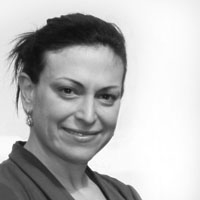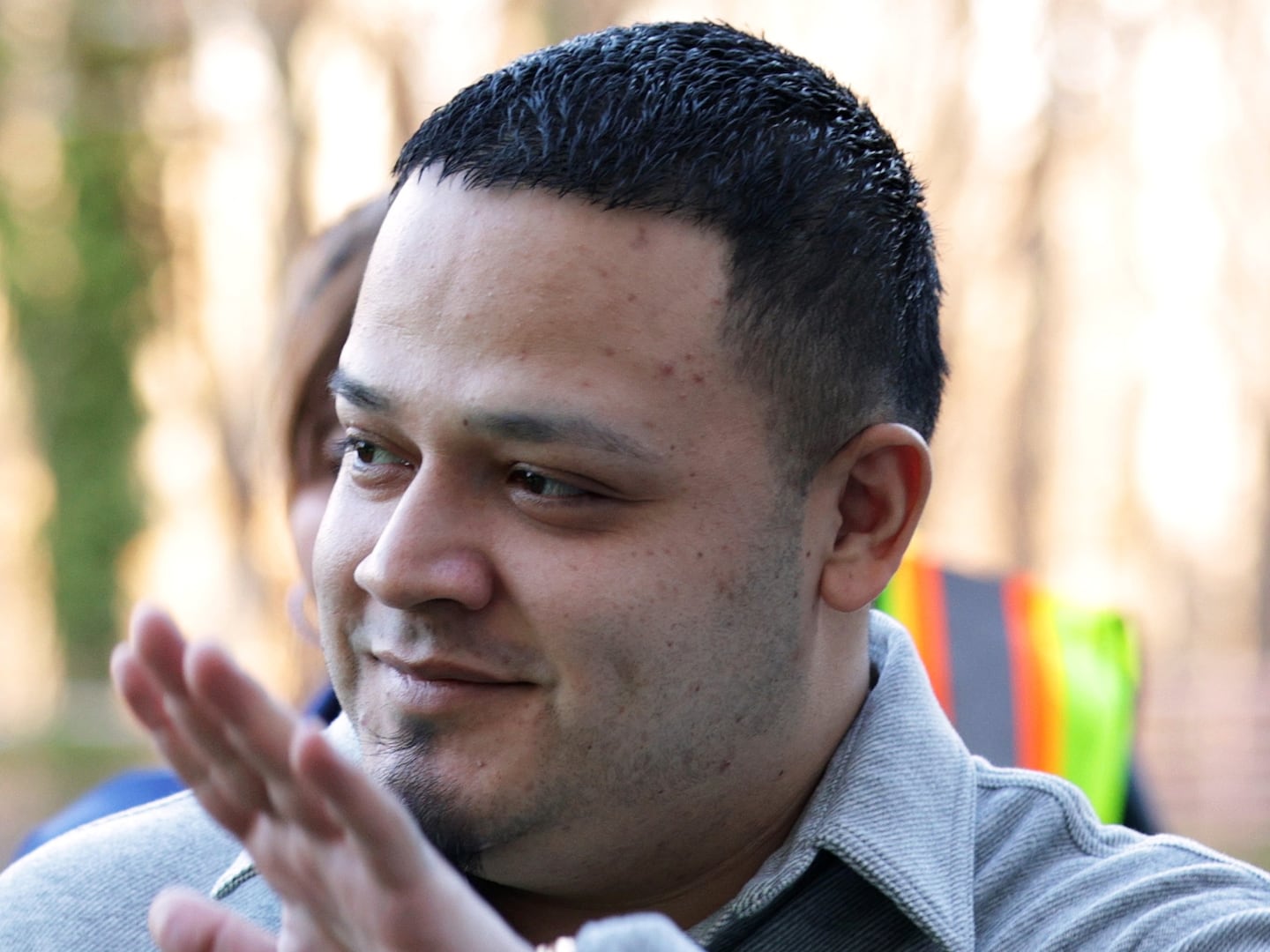Race, walk, skip, hop, dump ice water over your head for the cure? No thanks, say some with autism.
“Neurodiversity” advocates are not interested in finding a cure for autism. Rather than changing autistic people so that they fit into a narrow stripe of acceptable behavior in the world, they’d like to see the world expand its concept of acceptable behavior to include people with autism.
As this study indicates, people with autism are actually less likely than non-autistic people to think parents should seek a cure for an autistic child. While it shows that people with autism have mixed feelings about their disorder, a large majority feels neutral to positive about the concept of neurodiversity.
To a neurodiversity proponent, autism is a social problem. That is not to say that autism is fundamentally a problem with social skills; rather, it is a problem with society’s lack of tolerance for the range of thought patterns and behaviors that characterizes autism. A neurodiversity advocate might say, for example, that autistic people should not be forced to learn how to bring themselves to make eye contact, even if it makes them uncomfortable. The rest of us could learn to understand that lack of eye contact is not necessarily rude or weird but is part of the range of acceptable behavior. More than that: We could value the unique insights the autistic mind has to offer.
“The idea of a cure for autism doesn’t make sense. Autism isn’t a disease or an injury; it’s a neurodevelopmental disability that shapes our brains differently,” Julia Bascom told me via email. Bascom is director of programs for the Autistic Self-Advocacy Network, or ASAN, an advocacy organization run by and for autistic people.
She continued, “If I can’t talk, does it make sense to look for a pill for that, or should my speech therapist help me learn how to type or sign instead? Is flapping my hands or intensely and obsessively loving something ‘weird’ or wanting to be by myself the psychological equivalent of diabetes, or is it a natural and beautiful part of human diversity?”
The largest and most well-funded autism research and advocacy organization in the world is Autism Speaks. For their part, they do not shy away from the idea of a cure. Their mission statement on their website includes the phrase, “We are dedicated to funding global biomedical research into the causes, prevention, treatments and a possible cure for autism.”
As previously reported by The Daily Beast, Autism Speaks has had a clash of ideas with other autism advocacy groups, particularly ASAN, including over whether money should be spent on researching a cure for autism. Activists are attempting to commandeer the hashtag #autismspeaks10, which was created to celebrate the 10th anniversary of Autism Speaks, to criticize the organization.
“The autism community is represented by a beautifully diverse group of people who face a variety of challenges and possess many talents,” said C.J. Volpe, chief of media strategy for Autism Speaks, via email. “Some people on the spectrum need minimal support and can advocate for themselves, while many others live with serious co-morbid medical conditions, are in pain and seeking a voice to advocate for them. A vital part of our mission is to cure those who are in pain and suffering, and offer a voice to the voiceless.”
Volpe emphasized that Autism Speaks’ search for the underlying cause of autism—perhaps paving the way to autism’s cure—is intended to alleviate suffering. “Autism is a whole-body disorder and its symptoms can go beyond sensory and communication difficulties,” he said. “There are many people with autism who have seizures, are self-injurious, and suffer from crippling gastrointestinal disorders. By understanding autism’s causes, and how its symptoms interact, treatments can be developed to alleviate them.”
Kevin Timpe, a professor of philosophy at Northwest Nazarene University, thinks that discussions of cure are premature because of our lack of understanding of autism.
“In order to know whether or not we should cure autism we’d have to know, among other things, exactly what autism is. And it’s not clear to me that we do,” he wrote in an email. “For example, autism is often described as a spectrum, but it’s probably better understood along a number of spectra. And to date there is no known, objectively diagnosable etiology for it; it’s diagnosed, instead, on the bases of symptoms—and which ‘pet’ symptoms are focused on vary across diagnosticians.”
Eva Feder Kittay is a philosophy professor at Stony Brook University who has studied disability issues for years. While “autism spectrum” is usually evoked to capture the variety of autism, she echoed Timpe’s worry that autism is so complex, the word “spectrum” is actually too limited to describe it. “It’s not a spectrum, it’s more like a field,” she said.
Just as homosexuality used to be seen as a disorder but is now accepted as part of the range of human diversity, a neurodiversity proponent sees the classifying of autism as a disorder as a socially intolerant mistake. C.M. Lim is a research associate at the Centre for Biomedical Ethics, National University of Singapore who just published a paper on the debate between treating and accommodating autism in the journal Bioethics. He thinks autism and homosexuality are analogous in some ways, in that both are sought to be reconceptualized as part of normal human diversity, but they not entirely analogous.
“[Until] the 1970s, because of then-prevalent theories of homosexuality, it remained an important factual matter whether homosexuality was in fact associated with being defective in other areas of everyday life, including social effectiveness. It was important for members that they were in fact equally socially effective as heterosexuals. The neurodiversity claims do not assert for equal social effectiveness, but rather that autistics can be socially effective if society changes to accommodate their differences,” Lim told me in an email. “Also, what is practically involved in accommodating gay people and autistics differ significantly.” Paying attention to their differences will prevent us from simplistically assuming that autistics and gay citizens have to be accommodated in the same way. In this way, we prevent opponents of accommodation from offhandedly rejecting autistics activists' projects, simply because they are not accommodated in the same way.”
The push for neurodiversity acceptance is predicated at least partly on a broader idea, known as the “social model” of disability. According to the social model, disability is primarily a social problem rather than a medical problem. For example, someone who is paralyzed from the waist down, yet has a wheelchair and ramps as well as accessible buildings and facilities in her community, is far more functional (and thus has a different disability) than someone paralyzed from the waist down who has none of these things, even though they might appear medically similar. The traditional way of characterizing disabilities had been known as the “medical model.” The social model instead emphasizes the importance of society’s accommodations of those with disabilities.
It is based more on the social model of disability that ASAN rejects using money raised for autism to search for cause or cure. “We wish that research on autism was less focused on mice and fruit flies and genes, and more focused on finding effective forms of augmentative and alternative communication for autistic people who don’t speak; on what autism looks like throughout the lifespan, particularly as we age; and on what supports and accommodations and services can best enable people to live the lives we want,” said Bascom. “There’s very little known about the best accommodations for autistic adults—there’s very little known about autistic adults at all. We’d like to see that change.”
“While the social model has been useful in all sorts of ways, the distinction between the two models is too simplistic,” Kittay added. “There are aspects of disability that no one really wants that are part of the impairment, like pain, caused by impairment itself. With autism, there can be uncomfortable gastrointestinal symptoms. Treatment can reduce symptoms. That’s not curing autism as such.”
There are other manifestations of autism, though, such as hand flapping, that tend to make non-autistic people uncomfortable. Unlike gastrointestinal symptoms, these traits don’t make the person with autism uncomfortable—quite the contrary, they can often be soothing. Parents and teachers of children with autism sometimes try to extinguish these behaviors and encourage their child to act more like a typically-developing peer. These traits are what neurodiversity advocates would like the world to embrace, rather than trying to make the person with autism fit into the world.
“I have a friend, for example, who was let go from his job for ‘interpersonal difficulties which resulted from his autism.’ Had his employers been more sensitive to his autism, I think that his termination—and a lot of interpersonal hurt—could have been avoided,” said Timpe. “I’ve been engaged in a year of campaigning with my son’s local school district to get my son (who has both an autism diagnosis and other disabilities) into a least restrictive environment that is best for his education. In part because autism manifests itself in such a wide range of ways, what is the best educational environment for one might be very different from what is best for another.”
Sometimes, though, behaviors associated with autism are not only atypical. They can be very difficult to live with, both for the person with autism and his or her loved ones. Especially when verbal communication is a challenge, disruptive and aggressive behavior may become the only message a frustrated person with autism can send. Some, then, have claimed that neurodiversity can only be properly applied to so-called “higher-functioning” people with autism (the phrase is considered offensive by many), i.e., people who are verbal, who have IQs in the average range and above, people whose behavior isn’t especially challenging.
Bascom thought that society must gather the determination to accommodate people with more intensive needs. “If anything, it’s a question of will. We see this with many disabilities; people who might require a little more imagination or a little more effort to accommodate tend to be the first to be left out,” she said. “People with the most significant disabilities have the same right to inclusion and access as anyone else; when they’re left out, it says more about society’s deep-seated systemic bias against disabled people than it does about the particulars of any disability.”
Volpe, on the other hand, did not make a distinction in his worry between those with less intensive needs and more intensive needs. He said that society is not prepared to handle the growing generation of children with autism, no matter the level of verbal and behavioral challenges they present. “Autism is the fastest-growing serious developmental disability, and within the next decade, 500,000 children on the spectrum will transition to adulthood. Society is underequipped to accommodate them regardless of how intensive their individual needs are,” he said.
One form of therapy that has seen some popularity to address more challenging behaviors is Applied Behavioral Analysis Therapy, or ABA therapy. ABA therapy uses a system of rewards (for example, praise or a piece of candy) for a positive behavior and ignores undesired behaviors like tantrums and head banging. ABA has garnered some controversy among neurodiversity advocates.
“We’re big supporters of speech therapy or occupational therapy, where the focus is on supporting someone to gain skills or find accommodations,” said Bascom. “ABA therapy is another story; the stated end goal of ABA is for the autistic child to become ‘indistinguishable from their peers,’ and we just don’t think that’s an ethical goal. Would we be able to justify that for any other child?”
One major concern about ABA is that its very intent is to make autistic kids act like typically-developing kids instead of being themselves. Kittay notes that ABA is ultimately based on psychologist B.F. Skinner’s outmoded ideas about how humans learn. “That whole research program has failed in so many different ways, yet it keeps getting resurrected even as it fails in a new generation,” she said. “It’s true it is one of the few ways of getting measurable results, but just because you’ve gotten measurable results doesn’t mean you’ve gotten results worth measuring.”
She makes note of Noam Chomsky’s devastating 1959 takedown of Skinner’s behaviorism that paid attention to the idea that behaviorism was an implementable psychological theory. “Chomsky’s original critique of Skinner has never really been topped. Human beings just don’t work like that. There are much more respectful means of dealing with people. Behavioral modification doesn’t look at the real causes of behaviors, and there may be real issues you can address,” she said.
Challenging behaviors in people with autism are usually caused by stress, worry, and pain. If those can be eliminated—with a healthy diet, exercise, structured routine, safe space for retreat, time outdoors, etc.—many of the challenging behaviors can be eliminated.
“It’s worth noting that Ivar Lovaas, who originated ABA for autistic children, was also the co-investigator on the infamous ‘effeminate boys study,’ which used ABA principles in an attempt at normalization therapy for LGBT children,” adds Bascom. “The LGBT community, and much of the rest of society, rightly calls such tactics abusive when applied to LGBT children, yet ABA remains the treatment of choice for many autistic children.”
Beyond that, the question is ultimately whether we can and should learn not only to tolerate the differences of autistic brains, but to welcome them. “Some of the unique wiring in autism allows for some very original minds, if they are given the wherewithal to function,” said Kittay.





